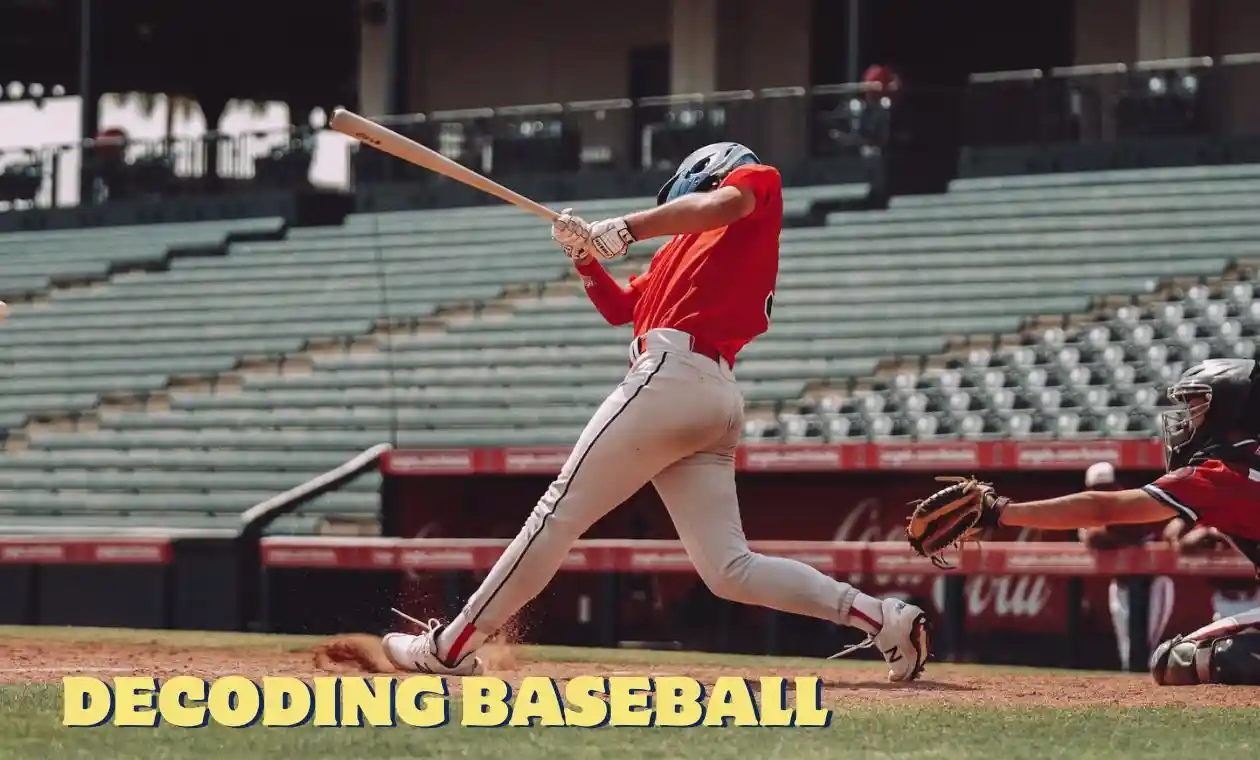
In the vast expanse of the baseball diamond, certain plays stand out as unique and captivating. From the artistry of a 6-4-3 double play to the thrill of witnessing a “no-no,” each play contributes to the narrative of the game. The term “bock” adds a touch of complexity, creating moments that echo through baseball history. Understanding these plays goes beyond the surface, delving into the heart of the sport’s essence.
The language of baseball is a lexicon of its own, and decoding it adds a layer of appreciation to the spectator’s experience. Recognizing the difference between a “no-no” and a perfect game or understanding the intricacies of a “P.O.” in crucial game situations fosters a deeper connection with the game. Baseball terminology is not merely a set of rules; it’s a gateway to unlocking the beauty and strategy woven into every inning.
As we embark on this exploration of the evolution of what is a bock in baseball, we invite you to unravel the mysteries of these unique plays, appreciate their significance, and delve into the very heart of America’s favorite pastime. Join us on a journey where each play tells a story, and every term holds a key to understanding the extraordinary world of baseball.
The Evolution of What is a Bock in Baseball
In the intricate tapestry of baseball’s history, the term “bock” emerges as a unique thread, weaving through time and shaping the very essence of the game. This exploration will delve into the historical roots of the term, tracking its evolution through rule changes and developments, and uncovering its profound impact on gameplay and strategy.
Historical Roots of the Term “Bock”
The term “bock” finds its origins in the early days of baseball, with its roots traced back to the mid-19th century. Initially, it referred to a pitcher’s deceptive motion meant to catch a baserunner off guard. The term gradually evolved, taking on a more specific meaning related to illegal pitching motions. The historical journey of the “bock” mirrors the ever-evolving nature of baseball’s rules and regulations.
Rule Changes and Developments Over the Years
As baseball matured, so did the rules surrounding the “bock.” Major League Baseball (MLB) implemented various changes to define and refine what constitutes a bock, aiming to maintain fair play. From adjustments in pitcher movements to stricter enforcement, the evolution of these rules reflects the sport’s commitment to maintaining a balance between offense and defense. Analyzing these changes provides insights into the sport’s adaptability and commitment to fairness.
Impact on Gameplay and Strategy
The evolution of what is a bock in baseball significantly influences gameplay and strategic considerations. For pitchers, avoiding a bock became a crucial skill, requiring precision and adherence to the established rules. Baserunners, on the other hand, learned to exploit any nuances in a pitcher’s motion, creating a dynamic interplay between offense and defense. Understanding the impact of bocks on gameplay enhances the appreciation of the nuanced strategies employed by teams and players throughout baseball’s storied history.
In essence, the evolution of what is a bock in baseball mirrors the broader evolution of the sport itself. From its humble origins to the meticulously regulated modern game, the term “bock” weaves through time, leaving an indelible mark on the strategic landscape of America’s favorite pastime.
Unveiling the 6-4-3 Double Play
In the symphony of defensive maneuvers on the baseball field, the 6-4-3 double play emerges as a masterpiece—a play that transcends the mundane and showcases the defensive artistry inherent in the sport. Let’s delve into the intricacies of this play, explore memorable moments etched in baseball history, and appreciate the balletic movements that define defensive excellence.
Explanation of the 6-4-3 Play
The numerical notation of 6-4-3 corresponds to the positions of players involved in executing this double play—shortstop (6), second baseman (4), and first baseman (3). It begins with a ground ball hit to the shortstop, who swiftly transfers the ball to the second baseman covering the base (6 to 4).
The second baseman, in turn, fires a precise throw to the first baseman, completing the double play (4 to 3). This seamless coordination requires split-second decisions, impeccable timing, and a mastery of defensive fundamentals.
Memorable Moments in Baseball History Featuring This Play
Baseball’s storied history is punctuated by unforgettable instances of the 6-4-3 double play. From crucial moments in championship games to routine brilliance in regular-season contests, this play has been the pivot point in countless games.
One iconic example includes the 1969 World Series when the New York Mets turned a pivotal 6-4-3 double play to secure their championship victory. These moments showcase the play’s impact in shaping the outcomes of games, solidifying its place in baseball lore.
Defensive Artistry on the Field
Executing a flawless 6-4-3 double play requires more than just athleticism; it demands a deep understanding of the game and a telepathic connection between infielders. The shortstop’s agility, the second baseman’s quick reflexes, and the first baseman’s deft footwork collectively form a ballet of defensive prowess.
The artistry lies not only in turning two outs efficiently but also in the anticipation, communication, and precision displayed by the infielders. It is a testament to the beauty of teamwork and the mastery of the defensive craft.
The 6-4-3 double play transcends its numerical notation; it embodies the essence of teamwork, skill, and strategic brilliance on the baseball field. As we unveil the layers of this defensive masterpiece, we witness not just outs on the scorecard but a ballet of coordinated movements that define the artistry inherent in the sport.
What is a No-No in Baseball
In the lexicon of baseball, a “no-no” is not a forbidden act but a rare and celebrated feat—a no-hitter. This exploration will uncover the definition and significance of a no-no, delve into iconic moments and achievements in no-hitter history, and capture the unparalleled thrill of witnessing a pitcher’s mastery on the mound.
Definition and Significance of a “No-No”
A “no-no” refers to a no-hitter, a pitching performance where a single pitcher, or a combination of pitchers, successfully prevents the opposing team from recording a hit throughout an entire game. This elusive accomplishment stands as a testament to a pitcher’s dominance, precision, and ability to navigate a lineup without conceding a single hit. The significance of a no-hitter extends beyond individual glory; it reverberates through baseball history, immortalizing the pitcher and etching their name in the annals of the sport.
Iconic Moments and Achievements in No-Hitter History
Baseball history is punctuated by iconic moments of pitchers achieving the elusive no-hitter. From Don Larsen’s perfect game in the 1956 World Series to Nolan Ryan’s record-setting seven no-hitters, each achievement adds a chapter to the storied narrative of baseball excellence. The diversity of pitchers achieving no-hitters, from seasoned veterans to rookies, showcases the unpredictable beauty of the sport. Each no-hitter is a unique masterpiece, creating indelible memories for players and fans alike.
The Thrill of Witnessing a No-Hitter
The anticipation builds with each pitch, each inning, as a no-hitter unfolds. For fans, the thrill lies not only in the outcome but in the unfolding drama on the diamond. The tension in the air is palpable, the crowd hushed in collective awe as a pitcher inches closer to etching their name into history. The final out of a no-hitter is a crescendo of emotions—a celebration of pitching excellence and a shared experience that unites fans in appreciation of the extraordinary.
A “no-no” in baseball is more than a statistical anomaly; it is a cultural phenomenon that captures the essence of the sport. From defining the achievement to reliving iconic moments and savoring the thrill of witnessing history, the no-hitter is a cherished aspect of baseball that transcends the boundaries of time and resonates with fans as a testament to the limitless possibilities within the confines of the diamond.
Baseball First: Exploring Foundations
In the expansive landscape of American sports, baseball stands as a timeless institution, its roots embedded deep in history. This exploration will traverse the origins of baseball, the evolutionary path of its rules and structure, and the profound cultural impact that has elevated it to the status of America’s pastime.
Tracing the Origins of Baseball
Baseball’s origin story is a tapestry woven with threads of folklore and historical accounts. While its precise beginnings are debated, the game is believed to have evolved from English bat-and-ball games brought to North America by early settlers.
By the mid-19th century, baseball had taken root in American culture, with variations of the game played in towns and fields across the nation. The mythic tale of Abner Doubleday’s role in baseball’s invention has been debunked, but it reflects the ongoing fascination with pinpointing the exact moment this beloved sport came to be.
Evolution of the Game’s Rules and Structure
As baseball gained popularity, so too did the need for standardized rules. The Knickerbocker Rules of 1845, penned by Alexander Cartwright, laid the foundation for modern baseball regulations. Over the years, the game has seen gradual refinements and adaptations, with key moments such as the adoption of nine players per team, the introduction of the designated hitter, and the implementation of instant replay. These changes reflect the sport’s dynamic nature and its responsiveness to the evolving tastes and expectations of both players and fans.
The Cultural Impact of Baseball as America’s Pastime
Beyond the confines of the baseball diamond, the sport has woven itself into the very fabric of American culture. Baseball is more than a game; it is a cultural touchstone that mirrors the nation’s history.
From the “Boys of Summer” to the crack of the bat echoing through small-town fields, baseball has served as a unifying force, transcending generations and fostering a sense of shared identity. The sport’s impact extends beyond athleticism, influencing literature, music, art, and even shaping national holidays like Opening Day.
Baseball First invites us to embark on a journey through time—a journey that unravels the enigmatic origins of baseball, tracks the metamorphosis of its rules, and dives into the cultural significance that has made it an enduring symbol of America’s pastime. As we explore these foundational aspects, we gain a deeper appreciation for the sport that has woven itself into the very soul of the nation.
Demystifying What is a P.O. in Baseball
In the intricate lexicon of baseball signals and strategies, the term “P.O.” holds a unique significance. This exploration will unravel the meaning of “P.O.” in baseball, elucidate its role and significance in various game situations, and showcase examples from famous plays and players, demystifying a key aspect of the sport’s communication and tactical playbook.
Understanding the Term “P.O.” in Baseball
“P.O.” in baseball refers to a pick-off attempt—a tactical move by the pitcher to catch a baserunner off the base, aiming to make a quick throw to a fielder who is ready to tag out the runner. This term is often used in shorthand on scorecards and in baseball discussions to signify a pitcher’s intent to control the opponent’s baserunning.
Role and Significance in Various Game Situations
The pick-off play serves as a dynamic element in a pitcher’s arsenal, offering a strategic advantage in thwarting baserunner advances. Its significance extends across different game situations, from tightening the defense with a runner threatening to steal a base to nullifying the lead of a daring baserunner eager to score. The effectiveness of a well-executed P.O. lies in its ability to disrupt the rhythm of the opposing team’s offense and keep baserunners on edge.
Examples from Famous Plays and Players
Throughout baseball history, moments of brilliance in executing the pick-off play have become iconic. Pitchers with a keen sense of timing and a precise throw have elevated the P.O. to an art form. Examples abound, from historic pick-offs in crucial playoff games to routine yet strategic moves in regular-season matchups.
Notable players and pitchers renowned for their pick-off prowess, such as Andy Pettitte and Mark Buehrle, showcase how this seemingly subtle move can have a game-changing impact.
In essence, demystifying what “P.O.” means in baseball unveils a strategic layer of the game that often goes unnoticed. It is a testament to the meticulous planning and execution that pitchers employ to control the flow of the game and keep opposing baserunners guessing. By understanding the intricacies of the pick-off attempt, fans gain a deeper appreciation for the tactical nuances that make baseball a sport of constant strategy and anticipation.
Conclusion
In the captivating journey through the intricacies of baseball, we have unraveled the mysteries of unique plays, explored the evolution of terms like “bock” and “P.O.,” and delved into iconic moments in baseball history. The 6-4-3 double play showcased defensive artistry, while the elusive no-hitter and the cultural impact of baseball as America’s pastime added depth to our appreciation of the sport.
Our exploration led us through the historical roots of the term “bock,” tracking its evolution alongside rule changes and developments. We unveiled the artistry inherent in the 6-4-3 double play, celebrated the significance of a “no-no” in baseball, and traced the origins of this timeless game that has become ingrained in the fabric of American culture. Understanding the term “P.O.” shed light on the strategic depth of baseball communication, showcasing the dynamic interplay between offense and defense.
As we recap these key points, it becomes evident that baseball is not just a sport; it’s a living language. The dynamic nature of baseball terminology reflects the ever-evolving landscape of the game. From its humble origins to the meticulously regulated modern play, baseball’s lexicon is a testament to its adaptability, resilience, and timeless appeal.
As we celebrate the rich tapestry of baseball’s terminology, we are reminded that the essence of the sport lies not only in its rules and plays but in the continuous dialogue between players, fans, and the evolving spirit of the game itself. In every term, every play, and every moment, baseball speaks a language that transcends time, connecting generations through a shared love for America’s favorite pastime.

Meet Daniel Anderson, the heart and soul behind Baseball Pro Picks. At 49, Daniel’s life has revolved around baseball, a passion that’s as strong today as it was when he first fell in love with the game. Living in the USA, Daniel has dedicated countless hours to watching, analyzing, and understanding every pitch, hit, and home run, making almost no game missed. His deep-rooted love for the sport is matched only by his commitment to sharing insightful, expert analysis with fellow baseball enthusiasts. With decades of experience and a keen eye for the game’s nuances, Daniel brings a unique perspective that enriches Baseball Pro Picks. Trust Daniel to guide you through the intricacies of baseball with the authority and trustworthiness of a true aficionado.


